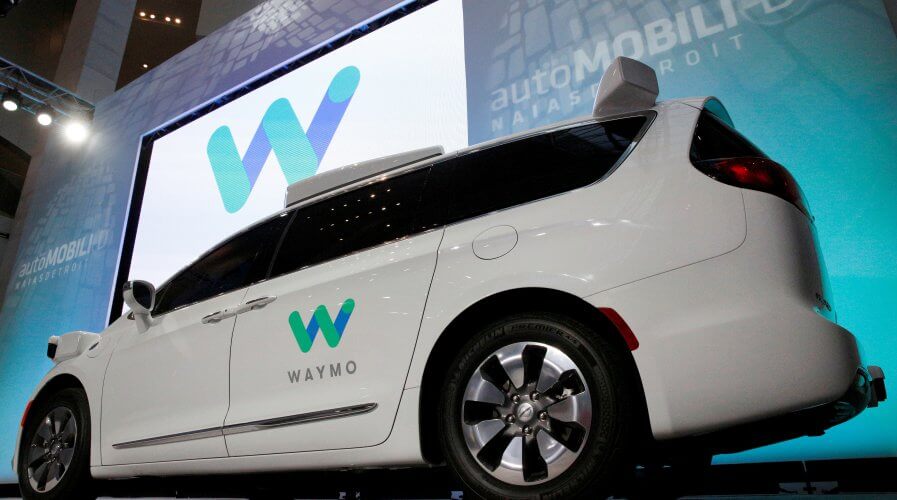
Waymo unveils a self-driving Chrysler Pacifica minivan during the North American International Auto Show in Detroit, Michigan, US. Source: Reuters
Waymo kicks the human out of self-driving taxi service
WAYMO, the self-driving vehicle branch of Alphabet Inc., announced on Tuesday that it is launching a fully driverless, autonomous taxi service in the United States.
The self-driving firm has been testing its autonomous cars for almost a decade, though it has always utilized “safety drivers” as a contingency in case its software goes haywire. Now, the Alphabet Inc. branch is getting rid of the technology’s human factor, with Waymo’s taxi service being composed of vehicles that operate completely independent of any human input.
According to a statement, Waymo is launching its first driverless, fully autonomous taxi service in a limited region of Phoenix in the state of Arizona, where its pilot program would be rolled out to volunteer passengers.
According to Waymo, however, its small pilot program in the Phoenix metro region is simply the first step of many in the company’s ongoing initiatives to push self-driving technologies.
The Alphabet Inc. branch asserted that the software used in its driverless taxi service in the Phoenix region is equipped with contingency after contingency. Since starting as a Google project back in 2009, Waymo’s self-driving cars have logged more than 3.5 million autonomous miles on public roads, as noted in an Ars Technica report.
This, as well as simulations that correspond to millions of miles worth of experience, have allowed Waymo’s autonomous software to perform like an experienced driver on the road.

Waymo is getting rid of its “safety drivers” as it tests its tech without training wheels. Source: Volvo
“At our private test track, we’ve run more than 20,000 individual scenario tests, practising rare and unusual cases. We’ve multiplied all this real-world experience in simulation, where our software drives more than 10 million miles every day,” Waymo said in the release.
“In short: we’re building our vehicles to be the most experienced driver on the road.”
After its test phase in the Phoenix metropolitan area, Waymo plans to expand its services to more cities in the United States. When this happens, commuters can utilize the service in pretty much the same way as Uber and Lyft. Using a mobile app, users could book a ride, and a driverless Waymo vehicle will pick them up, according to a Bloomberg report.
Waymo chief executive officer John Krafcik is optimistic about the self-driving, driverless service’s future, as well as its innate potential in changing the transportation industry.
“In the future, you could choose from an entire fleet of vehicle options that are tailored to each trip you want to make. People could claim the cars for a day, a week or even longer,” he said to Bloomberg.
If Waymo’s self-driving, driverless taxis would be a success in the US, it would only be a matter of time before similar services would be launched across the globe. After all, other firms such as Uber, Ford, and Volkswagen are also investing heavily in driverless technologies. Once the technology fully matures, it would only be a matter of time before driverless vehicles start rolling out on Asia’s streets.
Driverless technology, after all, definitely seems to be a landmark of the next era of public transportation. Just recently, NVIDIA GPU Ventures invested US$52 million in Chinese self-driving startup JingChi, which aims to provide driverless transportation services in the Asian economic superpower.
Waymo’s first driverless taxi service in Phoenix could very well be the spark that will ultimately start the era of self-driving transportation.
READ MORE
- Ethical AI: The renewed importance of safeguarding data and customer privacy in Generative AI applications
- How Japan balances AI-driven opportunities with cybersecurity needs
- Deploying SASE: Benchmarking your approach
- Insurance everywhere all at once: the digital transformation of the APAC insurance industry
- Google parent Alphabet eyes HubSpot: A potential acquisition shaping the future of CRM




